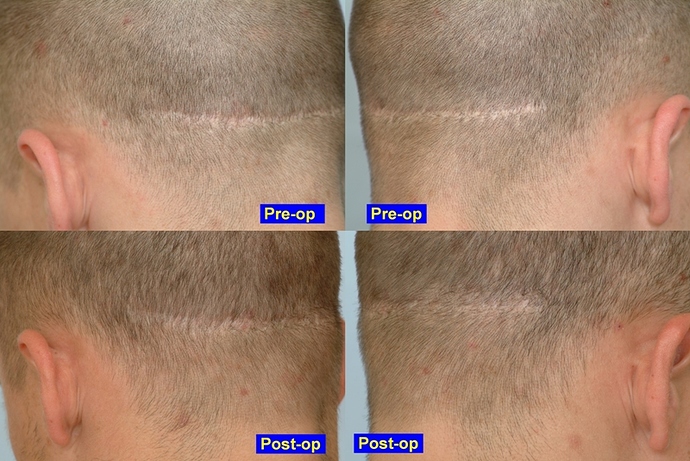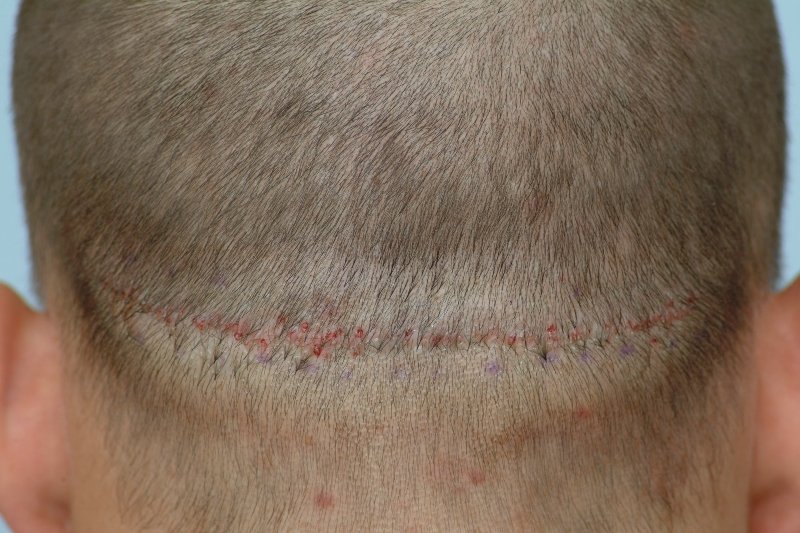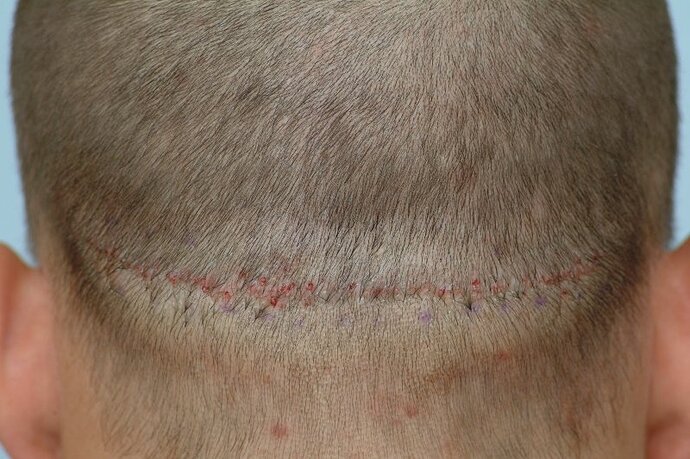» » » » Below is a photo showing a donor area of a patient who went to a
» » » well-known
» » » » clinic to have a strip procedure performed to remedy his hair loss.
»
» » » One
» » » » year after the strip (FUT) procedure, the patient’s goal was not
» met
» » and
» » » an
» » » » unwanted strip scar remained. The patient’s new goal was to have
» a
» » » » session of CIT grafting into the scar to improve the appearance.
» In
» » » the
» » » » summer of 2007, this younger patient came to our clinic for one
» small
» » » » session of CIT and test of BHT into the strip scar.
» » » »
» » » » Dr. Cole’s treatment plan for the patient was to graft the scar
» using
» » » » mostly scalp donor hair with a small percentage of leg hair to test
» » » yield
» » » » of growth into the scar. Eight months later, the hair density into
» » the
» » » » scar is noticeably greater. In the first pass, Dr. Cole
» transplanted
» » » » approximately 110 scalp hair grafts and approximately 20 body hair
» » » grafts
» » » » from the legs. When transplanting into scar tissue, we have
» noticed
» » » that
» » » » body hair tends to grow more consistently when anagen hairs are
» » placed
» » » at
» » » » lower densities (28 - 30 grafts per square centimeter). To
» » » significantly
» » » » improve the appearance of strip scars, usually more than one
» session
» » is
» » » » usually required for optimal results. Also attached is a post-op
» » » photo
» » » » showing the placement immediately after the second pass of grafting
» » » into
» » » » the scar. We expect the patient’s growth to continue over time.
» » » »
» » » » Pre-op & 8 month Follow-up:
» » » »
» » » »
» » » » Immediate post-op 2nd pass of scar grafting:
» » » »
» » » »
» » » »
» » » »
» » » »
» » » »
» » » »
» » » »
» » » »
» » » » My advice is not medical advice
» » »
» » » i like seeing scar repair cause i personally know how mentally
» » » debilitating it can be, there was improvement from the first pass,
» » should
» » » improve after this one,
» »
» » Sorry to hear about your troubles. Grafting into scars is probably
» most
» » effective but many patients try tattooing or scar revision. Dr. Cole’s
» » approach is conservative for a better result so that the end result is
» » optimal. Scar grafting can be difficult at times, but a conservative
» » approach to accomplishing the procedure usually helps the patient wear
» a
» » much shorter hair style. The scar may also widen over time as the
» scalp
» » heals and that can affect the direction of the hair. Some patient’s
» have
» » raised scars and another plan must be executed in these special cases.
» I
» » also believe this patient will see more improvement after this session.
»
» » Stay tuned…
»
» Thanks for sharing this result of scar grafting. The appearence has
» improved significantly after 1 pass. Too many younger guys want their
» scars filled in but are scared and scarred. No pun intended.
You are correct. The scar repair patients are more hesitant to try other methods that reduce the apprearence of the strip scar because the scarring they have already endured can be extremely difficult to have. We try our best to help these patients especially the military individuals because they need to be able to buzz down quite often.




